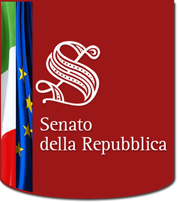The Transformation of Rome
Between the late 16th and the mid-17th century Rome underwent an extraordinary period of urban change. The new development of the city, planned by Sixtus V and Gregory XV, was starkly accelerated under Urban VIII (Maffeo Barberini, pope from 1623 to 1644), the main force behind grandiose works that changed the face of entire quarters of the city.
The Grand Duke of Tuscany Ferdinand II ordered that Palazzo Madama be restored in order to keep pace with the changes that were transforming the city. A baroque façade designed by Paolo Marucelli and completed in 1642 took the place of the former asymmetrical façade, in which "the doorway is not in the middle" and "the floors do not match" as we can read in a document dated 1595. Under the direction of Monanno Monanni, the interior was enriched with gilded ceilings and friezes.
The Medici did not, however, make any further use of the building until 1725, when Violante of Bavaria, sisterin- law of Gian Gastone de' Medici, the last member of the family, made it her residence. This was to be Palazzo Madama's last period of social splendour, a venue for balls and receptions as well as the seat of the Quirini Academy. In 1738, when the Medici family had died out, the building shared the fate of the Grand Duchy of Tuscany, which passed to Francis Stephen of Lorraine (later Holy Roman Emperor Francis I, reigned 1745-65), husband of Maria Theresa of Habsburg.
However, the new owner lived in Vienna and the Roman building was of no interest for him. In 1755 the Emperor sold the building to Pope Benedict XIV (1740-1758).




